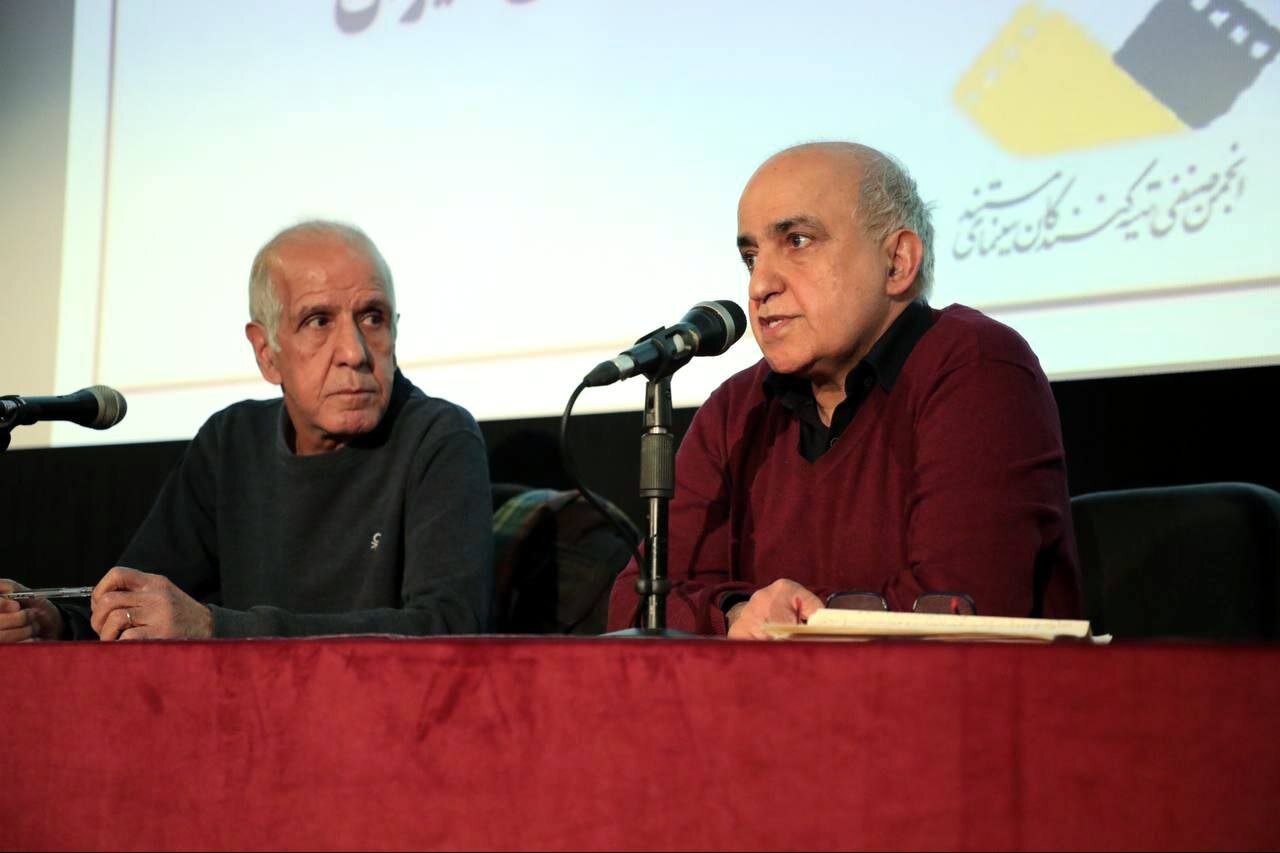
Following the screening of “The Black House”, Fakhr al -Din Sayyidi, a documentary, said: “In recent days, I read an article from Mr. Tahami Nejad that he had said that when he was a journalist student, Ibrahim Golestan was invited to see the first house.
Forough learned the cinema by editing
“I am grateful to the Cinema Museum for displaying this work,” said Parviz Jahed. The film’s filmmaker Suleiman Minasian is still alive and lives in London. Of course, he is not favorable due to illness.
He added: “Clay and Mirror” is the first story and “Black House” is the first documentary work to be performed on stage. Now and after so many years of the importance of this documentary in the world, for this reason, in cinema and festivals, “Black House” has been displayed many times and various articles and theses are written about its value, reminding us of the days that many Iranian critics have attacked this work in the 1980s.
The film was first screened at the Tehran Film Center, launched by Farrokh Ghaffari. It is important to note that the formation of the National Iranian Filtering is also the result of his efforts. The screening was attended by many critics and chest of Iranian films, and harsh attacks on the makers of the work were carried out.
Jahed said: “The House is Black” is built by the Assistance Association, but goes beyond the level of reporting and propaganda and becomes a poetic and philosophical statement about an important and old -fashioned disease.
Jahed continued: Forough Farrokhzad has entered the Golestan studio as a secretary and gradually learns the principles of the work. Sohrab Sepehri and Najaf Daryabandari are also other figures in the field of literature who traveled to Golestan Studios, though they did not know much about cinema. Forough was involved in the editing of the film “Wave and Marjan Jara” and taught cinema through editing.
He noted: When Golestan receives the order of this film, he realizes that Forough must direct the work.
Jahed noted: “I believe” The Black House “is the initiator of a kind of modernist documentary cinema in Iran, and the rejection of minimalism can be seen in the film. At that time, high harvesting was not common in Iranian cinema, if this is the case in the film. “Home is Black” has minimalist aspects that we will see later in Avansian and Kiarostami cinema.
He added that Forough’s empathy for the suburbs of Jazami in such a way that we did not see before, he added: “Forough was a painful and humanistic poet.” The positive thing is that his mixed with compassion and compassion did not make the characters a thorny appearance. The film is made with a poetic mentality and has many similarities to the poetry of the verses of the earth.
He continued: Unlike the poem of “ground verses”, which is desperate, in the film and in the darkness of life, the characters continue to demand light. The contradiction and dialectic of light and darkness is flowing through the “Black House”.
Jahed said that the research process is included in the film: I made a film about Solomon Minasian, the cameraman, and he explains that Forough’s mind was very involved with it. Before the filming, the group without Forough Farrokhzad is going to open a house to Mashhad. The film was supposed to be made in Mashhad, but there is a break in the filming process and proposes Dr. Raji Tabriz.
He continued: “The house is black” was built in a time when structuralism was the discussion of the day. There is also the impact of the duals in Golestan films. It is here that the duality of “beauty and ugliness”, “suffering and happiness”, “night and day” and “light and darkness” arise and do exactly that in the film’s editing.
He noted: Historically, “The Black House” is a first -class modernist film in the history of Iranian cinema, as well as a distinguished article, and Forough has been able to fully own a custom theme and present its personal worldview. The film’s shots are supposed to divide Forough’s poetry, and the filmmaker has been successful in this regard, and the work ultimately reveals the pessimistic look along with the Hope Kesus, which is rooted in Forough’s personal worldview.
There are many sounds in the movie
Following the meeting, the victorious sheriff’s office and the pioneering documentary said: “The sound of this film was on the scene, but this is not fully implemented in the editing, and we finally see there is a lot of sound in the film.”
He added: Abbas Baharloo wrote in the press under the pseudonym of Gholam Heidari in the press. He wrote a book called Forough Farrokhzad and Cinema, which is an interesting work. More than ninety percent of the book contains “The Black House” and he says we don’t know much details about Forough’s work in the “landscape” series.
“The house is black” is a Forough film and has nothing to do with Abraham Golestan, “said the director. But this has caused disputes. Forough has done a lot of work at Golestan Studios and has been particularly active as the editor. He has made two trips abroad and has followed the cinema. In my opinion, about 90 % of the film is forough. When I saw this film again, I came to the point that “The Black House” is close to that time and time.
He said that the context in which the film is made is also important: Iran’s documentary cinema is divided into two headings as a stream. Golestan Studios of Year 2 came into being, where there are many films. The studio was formed in the private sector and relies on a kind of producer who is the director. Many people work in the studio. But Iranian documentary cinema begins in the year when the Ministry of Culture and Art is formed.
He continued: The flow of Golestan does not become a continuing process. The start of our different cinema is with films such as “Cow” or “Clay and Mirror”.
The film has a poetic world
“When we look at documentary cinema,” Black House “is one of the first, one of the first,” the police said. Golestan’s documentary and fictional films after Forough’s documentary film experience a lot. The film has a hopeful look and faces a difficult situation, and this has been repeatedly considered. The film “The Black House” has been widely seen among critics outside of Iran, and Jonathan Rosenbam and Chris Marker praised it.
He continued: “It is said that in the documentary cinema the basis is based on research and if this does not happen, there is no stronger. “Home is Black” was filmed in 7 days, but it took months to edit. You have to see what role the research is in this film. If a film simply wants to deal with a particular topic, it will have a consumption date and must have the filmmaker’s world to achieve survival. The film has its own poetic world as well as its own humor.
The police said about the research process in making a documentary film, saying that the research is going through a whole film path, and it is not to be done first and then making a film based on it. Forough does not see this film as a beauty out of ugliness, because this is a lot in the film, and I think it is irrelevant. First you have to ask what beauty and ugliness means because each has widespread meanings. Forough, as he was known as a female poet at that time, but was always marginalized, and this is contrary to the usual notion. In my opinion, the film is weak in editing. I have sometimes watched this movie without speech, and I have to say the image has a lot of power and without speech it has an impact. Seeing “The Black House” sometimes I remember the film “Night and Fog” by Alan René, which has a horrific situation. In my opinion, many places and short messages have led to some kind of visual chaos, and I could never communicate with it. In this work, the two start and middle spaces belong to Golestan, and as a producer, he needed to determine the space. I am sure the texts of this documentary belong to Golestan.
The film said: “The film is not about” The Jama’is “and in the context of the position of the Jazamis, the filmmaker forms his conversation with the Creator. Of course, he did not treat the Jazmehs as a means, but he has seen them as a context for shaping dialogue.
He said: “The filmmaker does not interfere in the film, but it makes a choice, and except that, the film cannot be produced in another way, and everything that exists in nature is not to be recorded in the documentary film, because in this case the artist’s creativity is no longer meaningful.”
The program included: Pirouz Kalantari, Parviz Jahed, Saeed Rashtian, Ard Attarpour, Fakhroddin Sayyidi, Parvin Thaqi al -Islami, Mohammad Ali Hossein Nejad, Fatemeh Mohammadi, Cinema Museum, and so on.
1
